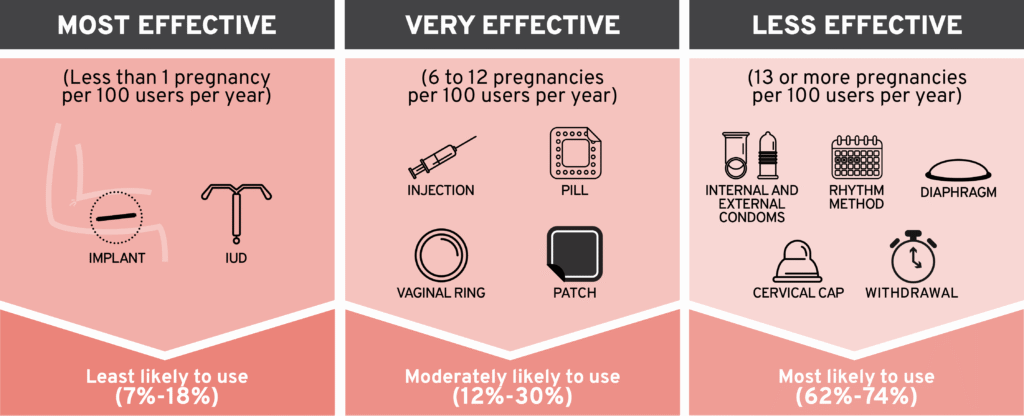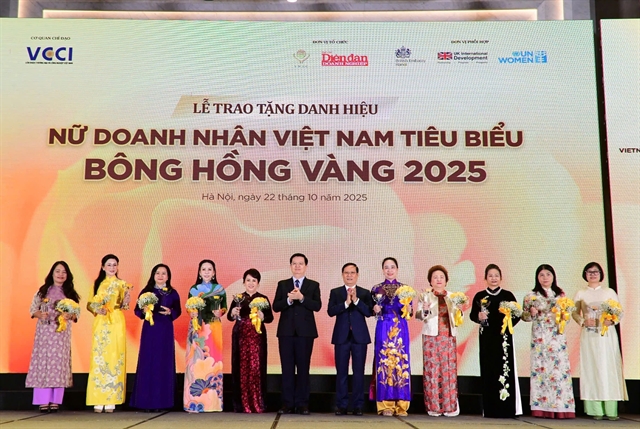Report on Gender Budgeting in India: A Tool for Achieving the Sustainable Development Goals
Introduction: Aligning Fiscal Policy with the SDGs
The integration of a gender perspective into national fiscal policy is a critical step toward achieving Sustainable Development Goal 5 (Gender Equality) and moving beyond traditional economic metrics like Gross Domestic Product (GDP). Gender budgeting serves as a macro-fiscal instrument to address gender inequalities, enhancing fiscal transparency and accountability in line with SDG 16 (Peace, Justice and Strong Institutions). India institutionalized this practice in 2004-05, led by the Ministry of Finance. This government-led initiative has produced valuable time-series data, enabling analysis of its impact on development outcomes. Empirical evidence confirms that gender budgeting in India has contributed to a decrease in violence against women and a reduction in gender disparities in education, directly advancing targets under SDG 5 and SDG 4 (Quality Education).
Despite operating within a rules-based fiscal framework aimed at consolidation, gender budget allocations have remained consistent, demonstrating a commitment to these goals. The nation’s decentralized fiscal structure, where revenues are centralized while key expenditures on health (SDG 3) and education (SDG 4) are managed at the state level, presents unique challenges. This report examines India’s gender budgeting framework, its role in promoting equity, and its alignment with the broader Sustainable Development Agenda.
1. The Macro-Fiscal Framework and SDG Financing
India’s post-pandemic fiscal strategy involves managing high deficits while pursuing fiscal consolidation. The Union Budget for 2025-26 targets a reduction in the fiscal deficit-to-GDP ratio, which has implications for public expenditure. The challenge lies in achieving these targets through revenue mobilization rather than expenditure compression, which could undermine financing for the SDGs. Notably, allocations for gender budgeting have been relatively protected from significant reductions, signaling a policy commitment to safeguarding progress on gender equality (SDG 5) even under fiscal constraints. The public expenditure-to-GDP ratio stands at 14.2%, while the tax-to-GDP ratio is 12.0%, highlighting the importance of revenue stability for sustainable expenditure design. The tax structure, with increasing contributions from direct taxes, forms the foundation for financing development priorities, including gender-responsive programs.
2. Incidence Analysis of Revenue and Expenditures
Assessing Distributional Outcomes for SDG 10 (Reduced Inequalities)
Analysis of how fiscal policies impact different population groups is essential for ensuring progress towards SDG 10. While formally gender-neutral, India’s tax system can reinforce existing economic inequalities. Studies indicate that indirect taxes are often regressive, placing a disproportionate burden on women in low-income households. To counteract such disparities and advance women’s economic empowerment (SDG 5), some subnational governments have introduced preferential tax measures, such as stamp duty discounts, to promote property ownership among women.
Public Expenditure and its Impact on SDG 3 and SDG 5
Public expenditure benefit incidence analysis (BIA) is crucial for understanding the distributional impacts of spending on key services. In the health sector, for example, analysis has shown that while subsidies may be pro-poor, they are not always equitable between genders, undermining progress on SDG 3 (Good Health and Well-being). Men often capture larger subsidies through higher utilization of tertiary care, while women rely more on primary services with lower public spending per patient. This highlights the need for gender-disaggregated BIA and greater investment in community-based care to ensure health financing is truly inclusive. The effectiveness of gender budgeting is also shaped by the political economy, where strong institutional anchoring and political will are necessary to translate fiscal tools into tangible gender equality outcomes, reinforcing the principles of SDG 16.
3. The Framework and Impact of Gender Budgeting in India
Gender budgeting in India extends beyond simple expenditure analysis to encompass the entire fiscal policy framework, including taxation and intergovernmental fiscal transfers (IGFTs). The implementation has progressed through four distinct phases, creating a comprehensive institutional architecture for advancing gender equality.
3.1 The Four Phases of Institutionalization for SDG 16
- Knowledge Building: Beginning in 2000, this phase involved developing an analytical methodology to diagnose gender gaps and integrate findings into national economic surveys, laying the groundwork for evidence-based policymaking.
- Creating Institutional Structures: From 2004-05, gender budgeting was formally incorporated into the national budget process. This included establishing a Gender Budgeting Secretariat within the Ministry of Finance and Gender Budgeting Cells in sectoral ministries, creating the institutional mechanisms required by SDG 16 for effective governance.
- Capacity Building: This ongoing phase focuses on training officials at national and subnational levels. It has been complemented by the feminization of local governance, where elected women representatives help translate community needs into public expenditure decisions, fostering participatory development.
- Installing Accountability Mechanisms: The final phase involves linking resources to results through fiscal marksmanship analysis and audits by the Comptroller and Auditor General (CAG). This oversight strengthens accountability and ensures that budget allocations translate into actual spending, a key component of transparent and effective institutions (SDG 16).
3.2 Impact on Gender Equality Outcomes (SDG 4 & SDG 5)
The consistent application of gender budgeting has generated data showing a positive impact on key development indicators. Research indicates that states implementing gender budgeting have made greater progress toward equal enrollment in primary schools, contributing directly to SDG 4 (Quality Education). Furthermore, it has been linked to improved gender equality outcomes more broadly. A critical component for equitable implementation is the design of IGFTs. As states are responsible for delivering essential services like health and education, transfer formulas must incorporate gender-sensitive criteria to ensure that poorer states have adequate resources to advance the SDGs and uphold the principle of leaving no one behind (SDG 10).
3.3 Gender Budgeting and the Care Economy (SDG 5 & SDG 8)
The COVID-19 pandemic underscored the macroeconomic importance of the unpaid care economy, a dimension critical to both SDG 5 (recognize and value unpaid care) and SDG 8 (Decent Work and Economic Growth). Gender budgeting provides a mechanism to make women’s disproportionate care responsibilities visible in fiscal policy. By integrating investments in care infrastructure—such as childcare and eldercare facilities—into economic recovery packages, governments can boost aggregate demand, improve female labor force participation, and address time poverty. Gender budgeting exercises have also spurred policy innovations, such as the provision of free LPG connections to women in low-income households, demonstrating how traditionally gender-neutral sectors can design programs that directly address women’s needs and contribute to multiple SDGs.
4. Conclusion: Policy Lessons for Accelerating SDG Progress
The experience of gender budgeting in India offers valuable lessons on how fiscal innovation can advance equity and accountability. To maximize its impact on the Sustainable Development Goals, the following points are critical:
- Institutional Anchoring is Essential: Embedding gender budgeting within the Ministry of Finance and making it legally mandatory are crucial for its sustainability and effectiveness, aligning with SDG 16’s call for strong institutions.
- Accountability and Outcome Monitoring Strengthen Effectiveness: Moving beyond tracking financial inputs to monitoring gender-disaggregated outcomes is necessary to ensure fiscal policy delivers tangible results for women and girls. Closing data gaps is key to this effort.
- Political Commitment Drives Success: Sustained political will is the primary determinant of whether gender budgeting becomes a transformative tool or a procedural exercise. Leadership is essential for integrating it into core planning and expenditure processes.
- Capacity Building Supports Implementation: Continuous investment in training officials ensures that gender-responsive approaches are understood and applied consistently across government, building resilient and knowledgeable institutions.
- Intergovernmental Fiscal Transfers (IGFTs) are a Lever for Equity: Integrating gender and demographic indicators into fiscal transfer formulas is a powerful tool to ensure equitable financing for essential services across all states, directly supporting the achievement of SDG 10.
1. SDGs Addressed in the Article
The article on gender budgeting in India addresses and connects to several Sustainable Development Goals (SDGs) by focusing on fiscal policies designed to reduce gender inequalities and improve outcomes for women. The following SDGs are relevant:
- SDG 5: Gender Equality: This is the central theme of the article. Gender budgeting is presented as a primary tool to “tackle gender inequalities,” directly aligning with the goal of achieving gender equality and empowering all women and girls. The article discusses its impact on violence against women, educational disparities, property rights, unpaid care work, and women’s participation in governance.
- SDG 4: Quality Education: The article explicitly states that “gender budgeting is linked to… a reduction in gender disparities in educational outcomes” and that states implementing it have “made more progress toward equal enrollment in primary schools.” This directly connects fiscal policy to the goal of ensuring inclusive and equitable quality education.
- SDG 16: Peace, Justice and Strong Institutions: The article emphasizes gender budgeting as a tool for “fiscal transparency and accountability.” It details the institutionalization of this practice within India’s Ministry of Finance, the creation of Gender Budgeting Cells, and the role of auditing and oversight mechanisms. This relates to the goal of building effective, accountable, and inclusive institutions at all levels.
- SDG 1: No Poverty: The article touches upon poverty reduction by mentioning a welfare scheme that provided “free liquified petroleum gas connections to women in households living below the poverty line.” This illustrates how gender-responsive fiscal policy can directly support social protection for the poorest and most vulnerable, contributing to poverty eradication.
- SDG 3: Good Health and Well-being: The discussion on public expenditure benefit incidence analysis (BIA) in the health sector highlights inequities, noting that men receive larger subsidies while women’s health needs, particularly in preventive and maternal care, are underfunded. This connects gender budgeting to the goal of ensuring healthy lives and promoting well-being for all, with a focus on equitable access to health services.
2. Specific SDG Targets Identified
Based on the article’s content, the following specific SDG targets can be identified:
-
SDG 5: Gender Equality
- Target 5.2: Eliminate all forms of violence against all women and girls in the public and private spheres. The article mentions that “Empirical evidence has shown that gender budgeting is linked to a decrease in violence against women.”
- Target 5.4: Recognize and value unpaid care and domestic work through the provision of public services, infrastructure and social protection policies. The article discusses how the COVID-19 pandemic “amplified women’s unpaid care responsibilities” and recommends integrating “care infrastructure—such as childcare centers and eldercare facilities—into recovery packages.”
- Target 5.5: Ensure women’s full and effective participation and equal opportunities for leadership at all levels of decision-making in political, economic and public life. The article references “the mandatory 33% for women elected representatives at the third tier” as a factor that helped in implementing gender budgeting.
- Target 5.a: Undertake reforms to give women equal rights to economic resources, as well as access to ownership and control over land and other forms of property. The article discusses tax incentives like “stamp duty (a property transfer tax) and property tax discounts” to promote property ownership among women.
- Target 5.c: Adopt and strengthen sound policies and enforceable legislation for the promotion of gender equality and the empowerment of all women and girls at all levels. The entire article is about the institutionalization of gender budgeting in India, which is a clear example of a policy framework designed to promote gender equality.
-
SDG 4: Quality Education
- Target 4.5: By 2030, eliminate gender disparities in education and ensure equal access to all levels of education and vocational training for the vulnerable. The article states that gender budgeting has a “positive influence on gender equality in elementary education” and leads to “more progress toward equal enrollment in primary schools.”
-
SDG 16: Peace, Justice and Strong Institutions
- Target 16.6: Develop effective, accountable and transparent institutions at all levels. The article describes gender budgeting as a “macro-fiscal tool” for “fiscal transparency and accountability” and details its institutional anchoring within the Ministry of Finance, the establishment of Gender Budgeting Cells, and oversight by auditing bodies.
3. Indicators Mentioned or Implied
The article mentions or implies several indicators that can be used to measure progress towards the identified targets:
-
Indicators for SDG 5 Targets
- For Target 5.2 (Violence): The article’s reference to a “decrease in violence against women” implies the use of an indicator measuring the prevalence or incidence of violence against women.
- For Target 5.4 (Unpaid Care): The discussion on women’s unpaid care work and the use of “time-use data” directly implies Indicator 5.4.1: Proportion of time spent on unpaid domestic and care work, by sex, age and location.
- For Target 5.5 (Participation): The mention of “the mandatory 33% for women elected representatives at the third tier” directly corresponds to Indicator 5.5.1: Proportion of seats held by women in (a) national parliaments and (b) local governments.
- For Target 5.a (Property): The analysis of policies promoting “property ownership among women” implies an indicator related to Indicator 5.a.1: (a) Proportion of total agricultural population with ownership or secure rights over agricultural land, by sex; and (b) share of women among owners or rights-bearers of agricultural land, by type of tenure. The article’s focus is on property more broadly, not just agricultural land.
- For Target 5.c (Policies): The detailed description of India’s government-led gender budgeting initiative, including its institutionalization and annual reporting, directly relates to Indicator 5.c.1: Proportion of countries with systems to track and make public allocations for gender equality and women’s empowerment.
-
Indicators for SDG 4 Targets
- For Target 4.5 (Education): The mention of reducing “gender disparities in educational outcomes” and achieving “equal enrollment in primary schools” implies the use of Indicator 4.5.1: Parity indices (female/male, rural/urban, bottom/top wealth quintile and others such as disability status, indigenous peoples and conflict-affected, as data become available) for all education indicators.
-
Indicators for SDG 16 Targets
- For Target 16.6 (Institutions): The entire framework of gender budgeting, which involves tracking allocations and linking “resources to results,” implies an indicator measuring the existence and effectiveness of gender-responsive public finance management. The article’s focus on “fiscal transparency and accountability” and the publication of an “annual expenditure profile statement” are measures of institutional effectiveness.
4. Summary Table of SDGs, Targets, and Indicators
| SDGs | Targets | Indicators (Identified in the Article) |
|---|---|---|
| SDG 5: Gender Equality |
5.2: Eliminate violence against women.
5.4: Recognize and value unpaid care work. 5.5: Ensure women’s full participation in leadership and decision-making. 5.a: Equal rights to economic resources and property ownership. 5.c: Adopt and strengthen policies for gender equality. |
Prevalence/incidence of violence against women.
Proportion of time spent on unpaid domestic and care work (measured by time-use data). Proportion of seats held by women in local governments (e.g., the 33% mandate). Proportion of women with property ownership (e.g., through stamp duty discounts). Existence of systems to track public allocations for gender equality (the gender budgeting framework itself). |
| SDG 4: Quality Education | 4.5: Eliminate gender disparities in education. | Gender parity index for school enrollment and educational outcomes. |
| SDG 16: Peace, Justice and Strong Institutions | 16.6: Develop effective, accountable and transparent institutions. | Implementation of gender-responsive budgeting, fiscal transparency measures (e.g., annual expenditure statements), and accountability mechanisms (e.g., audits). |
| SDG 1: No Poverty | 1.3: Implement nationally appropriate social protection systems. | Coverage of social protection schemes targeted at women in poor households (e.g., free LPG connections). |
| SDG 3: Good Health and Well-being | 3.8: Achieve universal health coverage. | Gender-disaggregated data on the distribution of public health subsidies and utilization of health services (e.g., inpatient vs. maternal care). |
Source: brookings.edu







